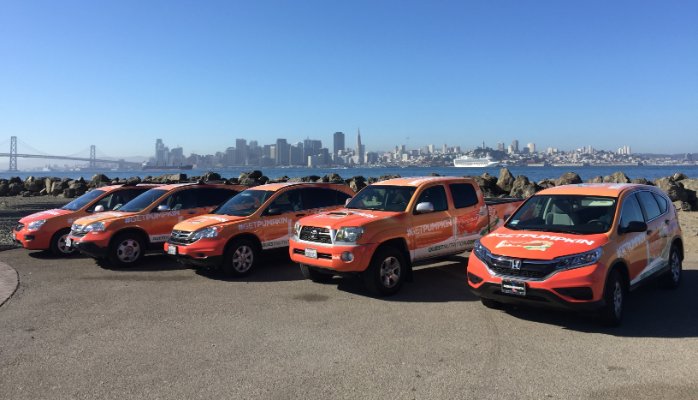Seems like a bunch of people are freaking out about Apple's new ad blocking technology. The company plans to let iPhone users who update to iOS 9 (the new iPhone operating system) block all ads seen through the phone's Safari web browser.
The ad-blocking tension between publishers and consumers is also escalating fast, with German publishing company Axel Springer — which recently acquired Business Insider — announcing Tuesday that it will be blocking readers who use ad-blocking technology like AdBlock or UBlock.
How many of you already use an ad blocker? According to TechCrunch, only about 10% of Americans do right now, though the publication makes it sound like we’re late to the party: There are more than 200 million people worldwide who use one, including a full one-third of Greece (“And look where that’s gotten them!” I imagine one snarky ad-sales guy saying).
The Axel Springer move comes on the heels of Apple enabling ad blockers to work on its web-browser Safari. which is also the built-in browser for the iOS 9 update, which makes up roughly half the world's mobile market.
Though Apple has backed off somewhat from their position because of security concerns, it will probably just be a speed bump while privacy is preserved. As Time magazine notes, this is all part of a larger battle between the titans of technology, Apple and Google, with Apple seeing an opportunity to undermine Google’s chief form of revenue.
I’m not here to weigh in on that battle of behemoths, but I would like to offer a couple thoughts on ad-blocking.
First and foremost, this probably wouldn’t even be a problem if the USA had broadband speeds matched the world’s best; instead we rank 17th in internet connection speed. If we had speeds that matched, say South Korea, Japan, Israel or….Latvia (?!?), web pages would not be slowed while loading with a half-dozen banners or skyscrapers, a pop-up and a pair of auto-play videos. And sometimes more.
And that’s the second thing: In their increasingly urgent efforts to make up revenue losses that come with the decreasing circulation of physical magazines, as well as diminished prices for online advertising, publishers are cramming more and more ads on to pages in order to make up the difference in revenue.
Is it unexpected that readers would want to escape an onslaught of advertising that slows and diminishes their digital experience, as well as tracks their online movement? Of course not. I suspect, in the end, it will be publishers who make it impossible for users of ad blockers to read their content who will suffer.
And advertisers, of course. As a new campaign from the Outdoor Advertising Association of America points, there is increasing concern from marketers about whether their advertising is even being seen by people on the web. “Feel the real,” the OAAA states.
We agree completely with the OAAA, and know Wrapify can be a big part of this “real”-ity. Wrapify vehicles go where people are — on the roads, in their cars, a captive commuting audience — and get seen. The data confirms it.
Because unlike most OOH advertising, Wrapify has the technology and data to provide the facts of how many people are seeing your campaign. For example: A two-month campaign of five wrapped vehicles for Petco yielded 3.2 million impressions in the San Francisco area.
So we see the growing clamor around ad-blocking technology as another highly encouraging sign Wrapify is entering the marketing marketplace at exactly the right time.
You can see Wrapify vehicles for Petco, Harrah’s and several other advertisers in five cities — San Francisco, Atlanta, Los Angeles, San Diego and Orange County — with three more hitting the road in November: Phoenix, Seattle and Sacramento. It’s only the beginning, and it’s for real.
